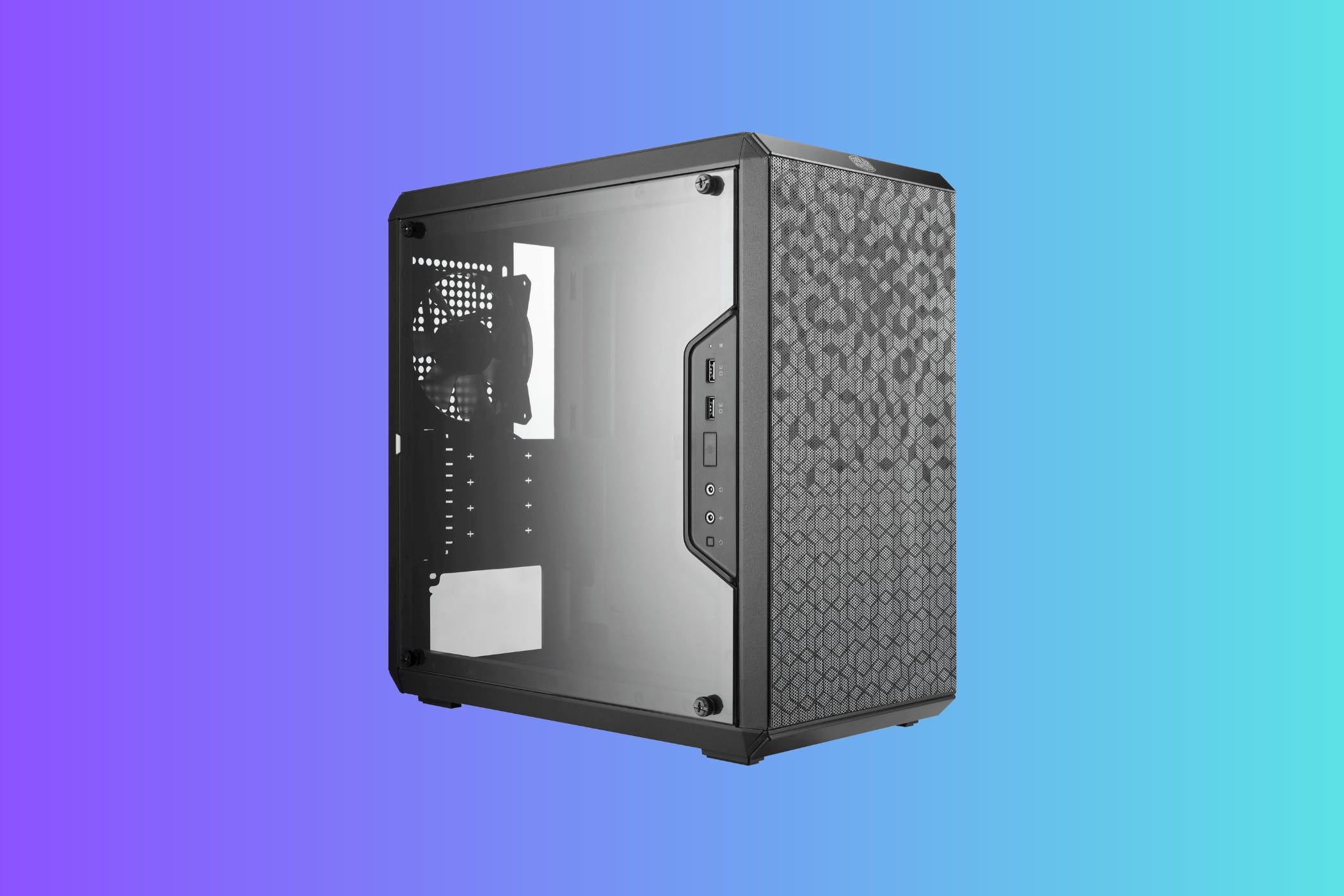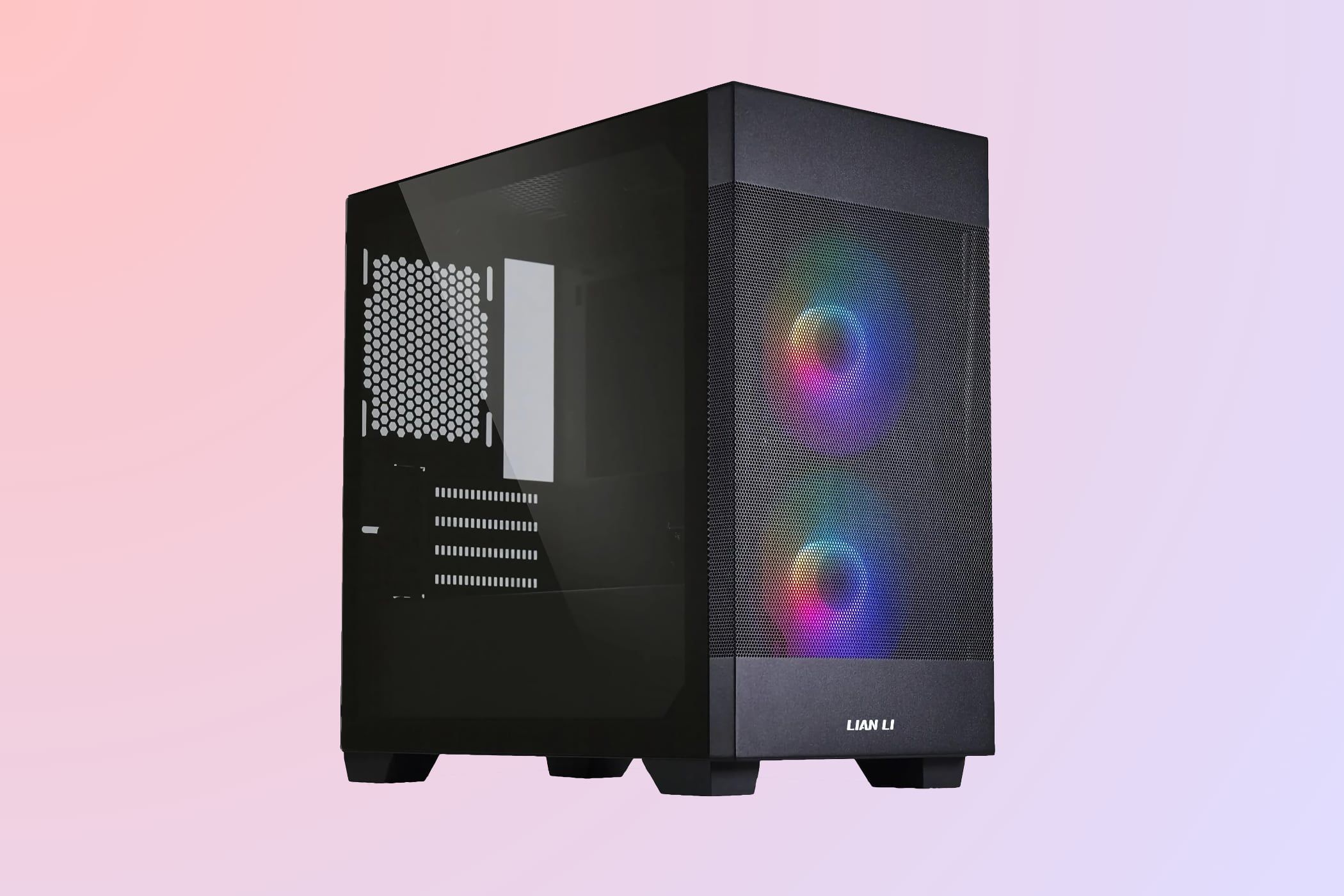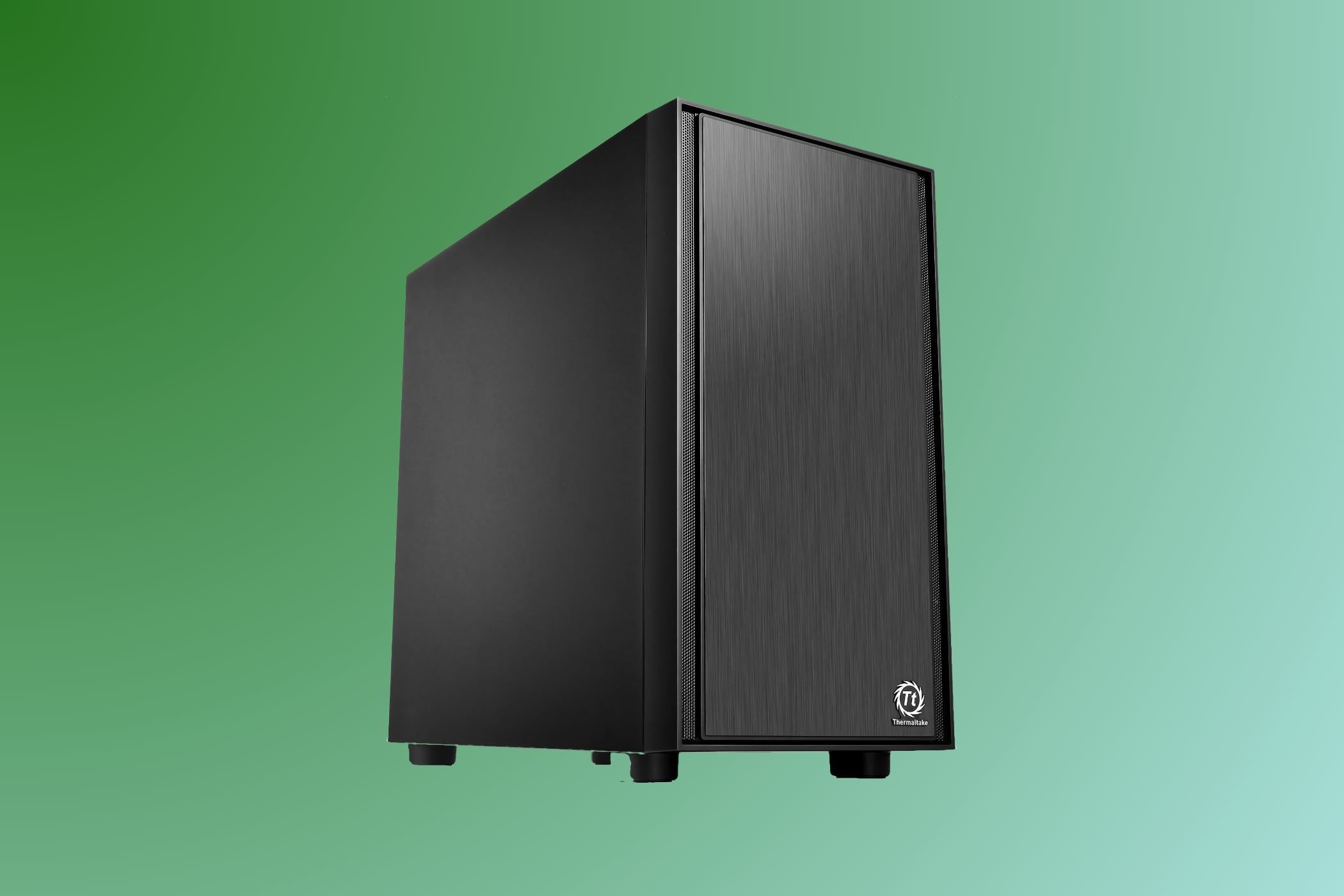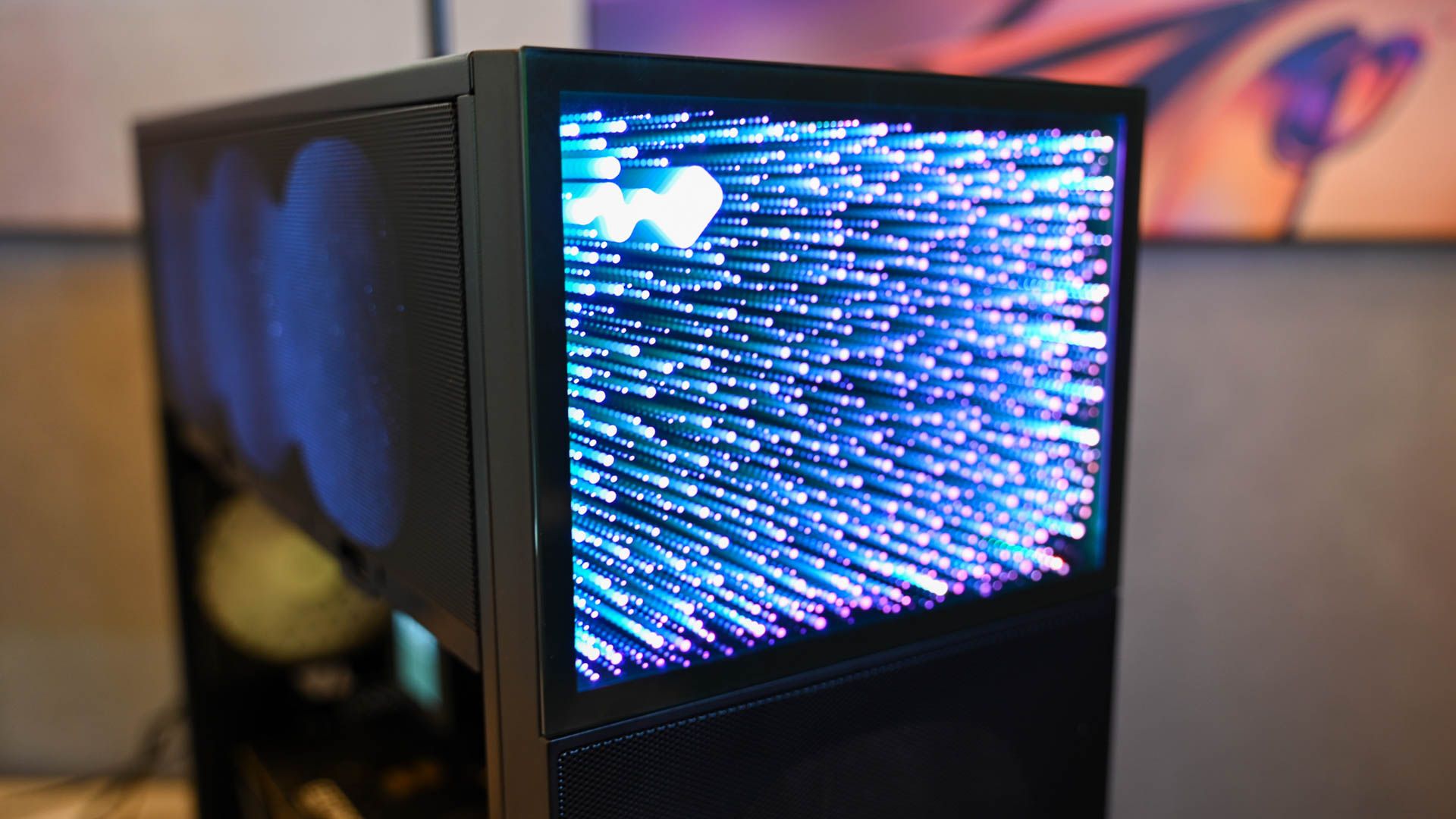
When you’re looking for a small-footprint PC build that can still pack plenty of power, Micro-ATX is the way to go. These cases may be small, but they’ve got the airflow and clearance to build the ultimate PC.
Buying a Micro-ATX Case in 2023
A Micro-ATX case is smaller than a typical mid-tower PC case and uses a smaller motherboard. While these are bigger than a Mini-ITX case, they offer a great combination of a relatively small size but plenty of room inside for powerful components. Still, not all Micro-ATX cases are created equal, so you’ll need to keep a few things in mind.
While Micro-ATX is a motherboard standard measuring roughly 9.6 by 9.6 inches, this doesn’t mean all the cases are the same size. A Micro-ATX case will always be large enough to fit that motherboard, but it can also be larger for better airflow or more room. They may also support other motherboard form factors like Mini-ITX.
You’ll have to keep the size in mind as you’re planning your PC build, as you will likely want to balance between overall size and room for airflow. This largely depends on what you’re using your PC for. A gaming PC will need more cooling than a computer you mostly use for browsing the web and watching YouTube videos.
Clearance is an important consideration in any PC build, and it isn’t any less so here. Larger cases have more clearance for fans, liquid cooling, and other components. You’ll also need to keep in mind the graphics card you plan to use, as these can get rather long, and not every graphics card will fit every case.
Cooling is another consideration. Air cooling will be fine for many builds. But if your rig is working harder, whether via gaming, video editing, or other heavy workloads, you’ll need better cooling. Plenty of Micro-ATX cases feature both air and AIO cooling, but you’ll need to be careful to plan around which type of cooling you’re going to use.
Finally, there’s the issue of power supplies. Some Micro-ATX cases feature support for full-size ATX power supplies, but not all. You’ll also find that some cases come with power supplies, but these are often best used with PC builds that won’t see heavy workloads.
|
How Did We Research |
||
|
Models Evaluated |
Hours Researched |
Reviews Analyzed |
|
15 |
3.5 |
18 |
How-To Geek’s product recommendations come from the same team of experts that have helped people fix their gadgets over one billion times. We only recommend the best products based on our research and expertise. We never accept payment to endorse or review a product. Read More »
|
Pros |
Cons |
|---|---|
|
Spacious interior for the size |
Not as quiet as it could be |
|
Fits up to 360mm radiators and 338mm GPUs |
|
|
Fits ATX power supplies |
|
|
Comes with either mesh or tempered glass side panels |
ASUS is known for many things, but in general, the company hasn’t been known for making PC cases, or at least they weren’t. The ASUS Prime AP201 is great proof that the company should keep it up, though, as it offers a great combination of style, a spacious interior, and solid cooling.
The AP201 has a 33-liter footprint, which isn’t all that large, but it does a lot with the space. With support for full-size ATX power supplies up to 180mm long, graphics cards up to 338mm long, and both 280mm and 360mm radiators, the interior is roomier than it seems at first.
The case has good airflow for its form factor and size, with the ability to run up to six fans. You can also opt for water cooling, which makes the AP201 flexible enough for plenty of different builds. It’s easy to work on as well, with tool-free side panels and cable management channels to keep everything easy and breezy.
The AP201 is available in both mesh and tempered glass side panel options. The mesh cases come in black and white options, and the tempered glass versions are available in black and white as well.
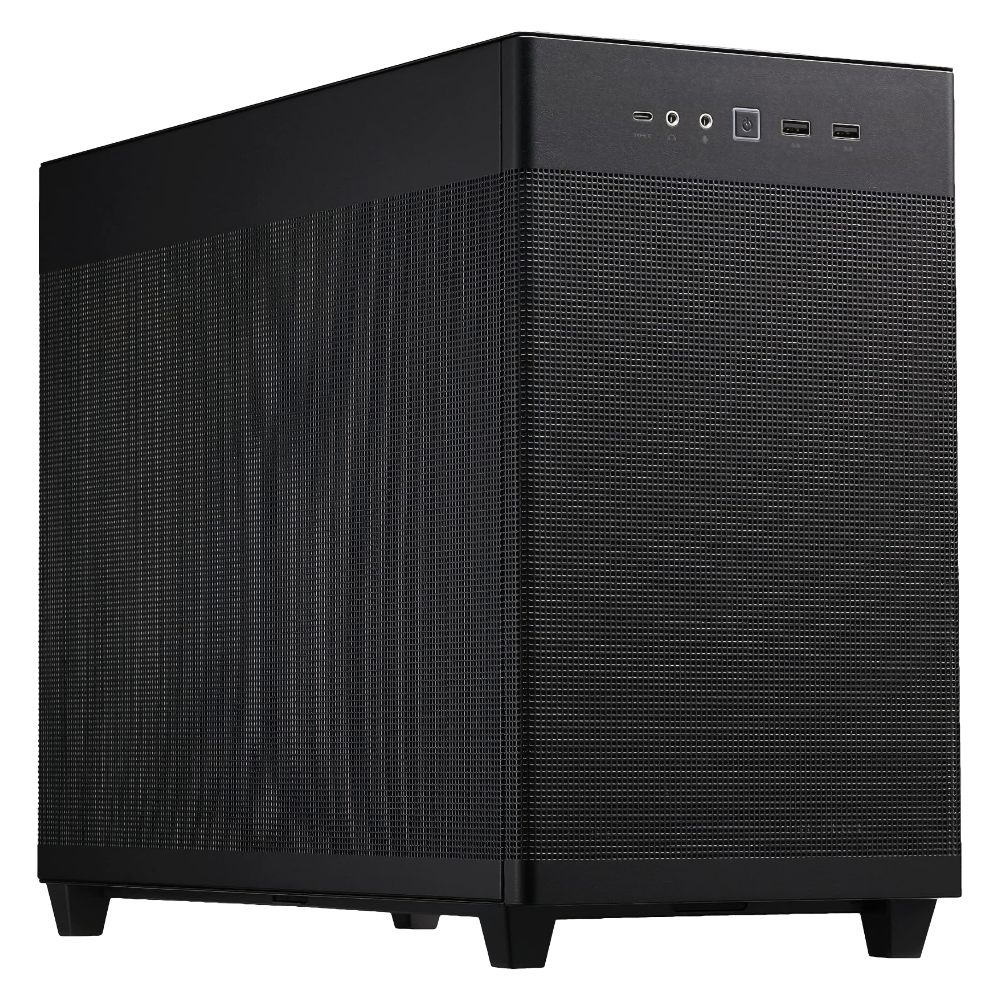

ASUS Prime AP201
Best Micro-ATX Case Overall
The company may not be primarily known for its PC cases, but the ASUS Prime AP201 is one of the best options for a Micro-ATX PC build with plenty of space, plus both mesh and tempered glass side panel options.
|
Pros |
Cons |
|---|---|
|
Modular IO panel is handy |
Mesh design isn’t for everyone |
|
Supports Micro-ATX and Mini-ITX motherboards |
|
|
Available with optional 600W power supply |
Buying an affordable Micro-ATX case doesn’t mean you have to settle for a brand you’ve never heard of before. The Cooler Master MasterBox Q300L comes from a brand whose name is nearly synonymous with PC cases. And while it may be budget-friendly, it has plenty of flexibility.
The MasterBox Q300L takes a modular approach to its IO panel, letting you put it on the front, top, bottom, or even both sides. This is handy because you can mount the case either vertically or horizontally, depending on which works best for you.
The case supports both full ATX and smaller power supplies, as well as both Micro-ATX and Mini-ITX motherboards. Regardless of which motherboard you’re running, cable management channels behind the motherboard help you keep everything tidy. To keep everything clean, there is a magnetic dust filter on the front of the case.
If you have a power supply ready to go, you can buy the case as is. On the other hand, if you haven’t yet chosen a power supply, you can buy the case bundled with a 600W power supply.
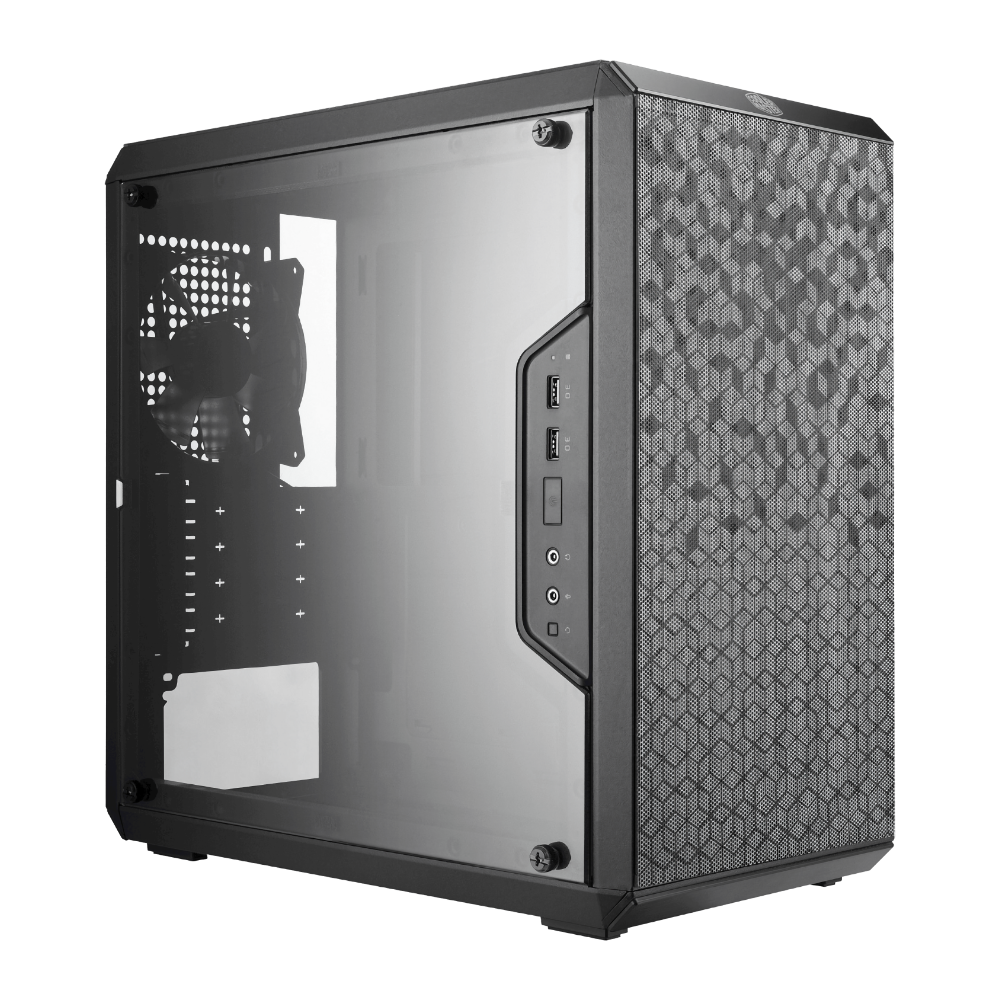

Cooler Master MasterBox Q300L
Best Budget Micro-ATX Case
If you’re looking to save money on a Micro-ATX case, the Cooler Master MasterBox Q300L is a fantastic option with a customizable, modular approach from a reputable brand that has been respected for years.
Best Premium Micro-ATX Case: JONSBO D31
|
Pros |
Cons |
|---|---|
|
The removable built-in screen is novel and useful |
Cable management can be tough |
|
Easy to remove side panels and even front mesh |
|
|
A mix of mesh and glass for cooling and looks |
Regardless of colorful fans and bright lighting, PC cases tend to look very similar to one another unless they do something radically different. The JONSBO D31 is a spacious case with plenty of great features, but it’s the large color screen that sets this one apart from many of its competitors.
The screen here is a 1280×800 display that sits on the front of the case, giving you instant access to information like GPU and CPU temperatures. If you’d rather have it even easier to see, you can separate the screen from the case and use the included cable to mount it on your desk. If you’re overclocking or need to closely monitor temperatures, this is handy to have.
Like many cases, the JONSBO D31 uses a tool-free design, but here even the front mesh easily pops off for quick access. Fitting the power supply and managing cables may not be as easy as it is in other cases, but it isn’t bad for the form factor.
The case uses a combination of tempered glass and mesh in its design, giving you the cooling benefits of mesh with the better view of the tempered glass. The JONSBO D31 is available in white and black color options.
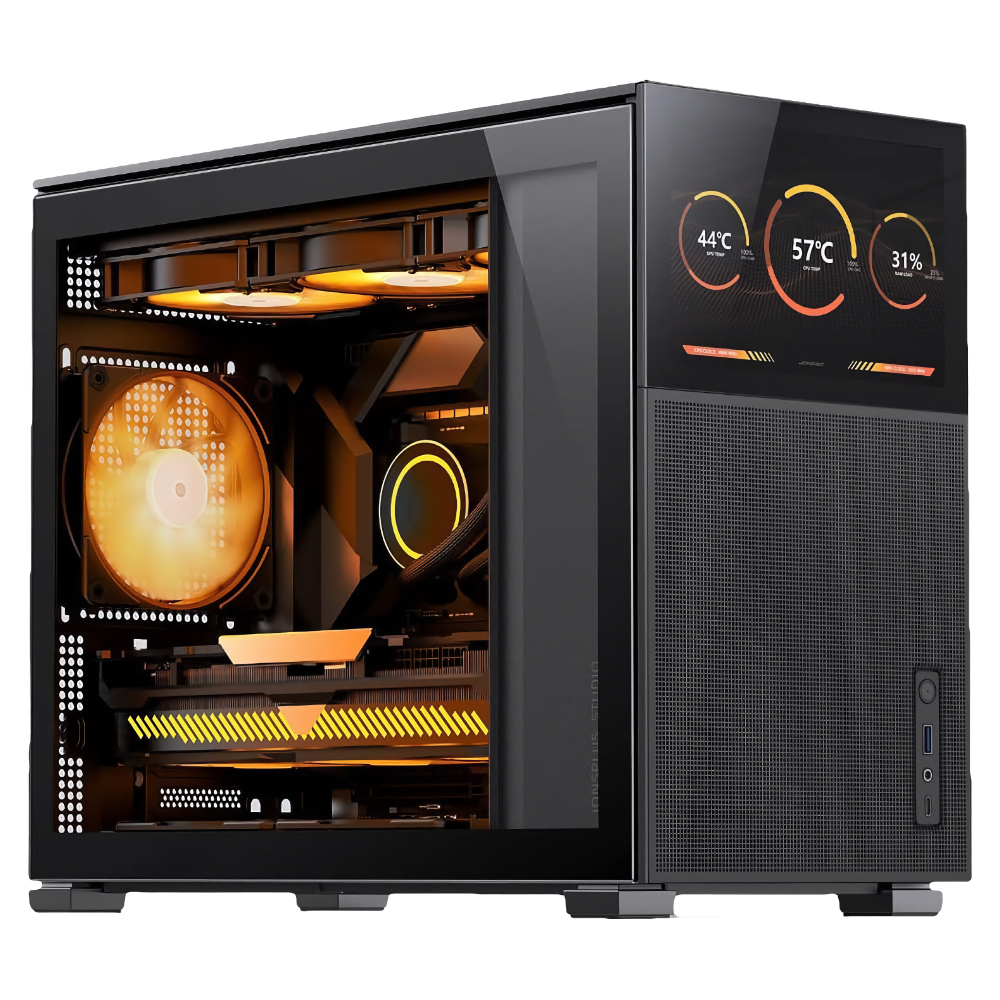

JONSBO D31
Best Premium Micro-ATX Case
The JONSBO D31 is a great case for plenty of reasons, but it’s the built-in 1280×800 screen that sets it apart from the competition. You can even place it on your desk to keep a close eye on your PC’s status.
Best Micro-ATX Case for Gaming: Lian Li 205M
|
Pros |
Cons |
|---|---|
|
Fits Micro-ATX and Mini-ITX motherboards |
Maximum radiator clearance is tight |
|
Includes two 140mm ARPG fans |
|
|
Room for up to 375mm GPUs |
Plenty of people use the Micro-ATX form factor to build quiet workhorse computers that never see much heavy use. If you’re looking to build a mini gaming powerhouse instead, the Lian Li 205M is the case for you, with a mesh and tempered glass build, plenty of room, and style to spare.
If you’re going to run a heavy-duty graphics card, this case is a good pick since it supports GPUs up to 375mm in length. The case also supports both Micro-ATX and Mini-ITX motherboards, and regardless of which you use, there’s plenty of room behind the motherboard tray for easy cable management.
Out of the box, the 205M offers air cooling with two pre-installed 140mm ARGB fans. There is plenty of room for three additional fans on the top and in the rear. On the other hand, the 205M is also set up for liquid cooling, with support for up to 240mm radiators on the top and front.
The Lian Li 205M is available in Snow and Black color varieties. If you like the case but want something a little bigger, full ATX versions are available.
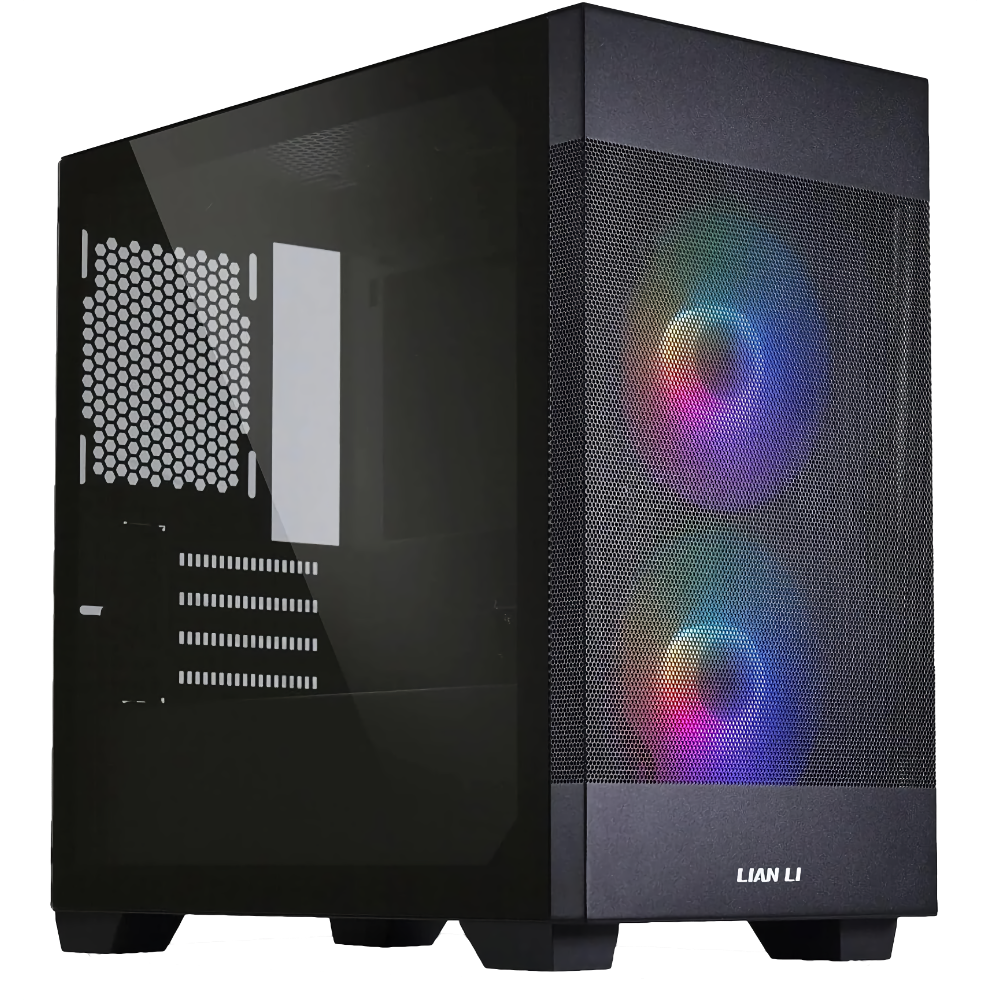

Lian Li 205M
Best Micro-ATX Case for Gaming
The Lian Li 205M proves that big things can come in small packages, with space for up to 375mm GPUs. two built-in 140mm ARGB fans, room for plenty more, and support for air cooling as well.
|
Pros |
Cons |
|---|---|
|
Plenty of options for air or liquid cooling |
Only available in black |
|
Hidden drive bays stay out of the way |
|
|
Supports both Micro-ATX and Mini-ITX motherboards |
Smaller cases can be harder to cool, especially if you’re not looking to spend a fortune. The Thermaltake Versa H17 happens to be affordable, but that’s not why we’re recommending it. Whether you’re opting for air or liquid cooling, the Versa H17 is a sleek, quiet, and understated case.
The case ships with a pre-installed 120mm fan in the rear, with the option to run three 120mm fans or two 140mm fans in the front. You can also run a 120mm or 140mm fan in the top of the case to maximize ventilation. The case also supports AIO liquid cooling, with support for a 280mm radiator up front and a 120mm radiator in the rear.
Drive cages can take up a lot of space in a case, making cable routing a pain. The Versa H17 uses hidden drive bays that stay out of the way, with support for two each of 2.5-inch and 3.5-inch drives at the same time. The ports are handily located on the top of the front panel, with USB 3.0, USB 2.0, and microphone and headset jacks.
Finally, like some of the other cases we’ve looked at, the Thermaltake Versa H17 supports both Micro-ATX and Mini-ITX motherboards.


Thermaltake Versa H17
Best Micro-ATX Case for Cooling
Whether you’re looking to build a simple air-cooled PC for productivity or a liquid-cooled secret monster, the Thermaltake Versa H17 is a great platform to build in, with support for both Micro-ATX and Mini-ITX motherboards.
FAQ
What’s the difference between a Micro-ATX and Mini-ITX case?
The cases fit motherboards of each standard, and Micro-ATX is larger than the Mini-ITX standard. Micro-ATX motherboards measure 9.6 x 9.6 inches, while Mini-ITX motherboards measure 6.7 x 6.7 inches. Cases are designed to fit these sizes.
Can I use a Micro-ATX case for gaming?
Yes. While you may have to be more careful about the components you choose for proper clearance and airflow, you can build a powerful gaming PC in the Micro-ATX form factor.
How do I clean my PC case?
To clean the outside of the case, you can wipe it down with a cloth, using rubbing alcohol and cotton swabs to remove fingerprints. To clean the vents, you can use a can of compressed air. For more information, see our guide to cleaning your PC.


